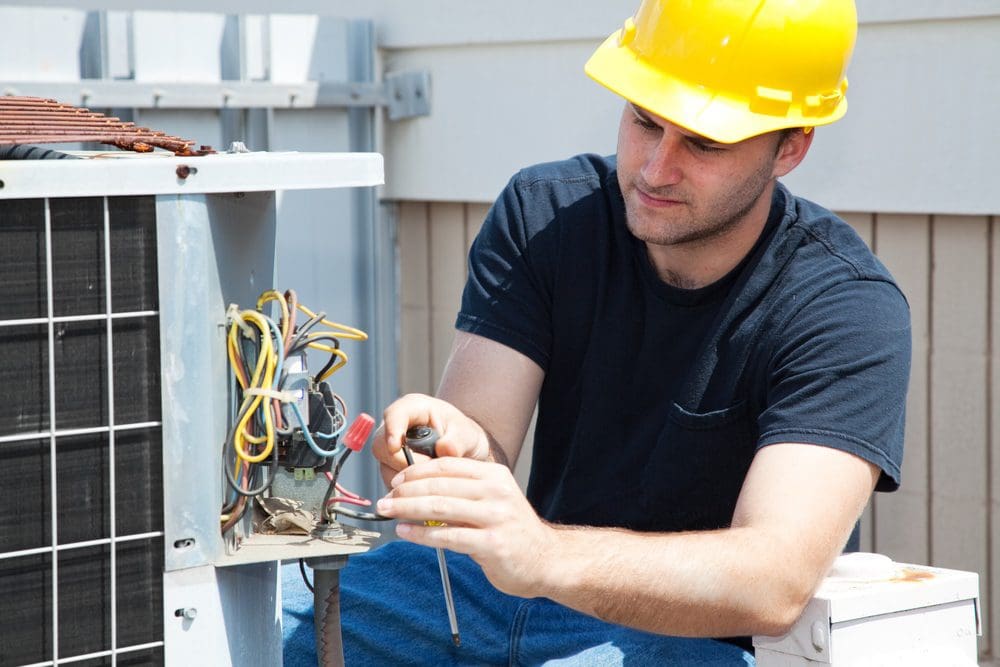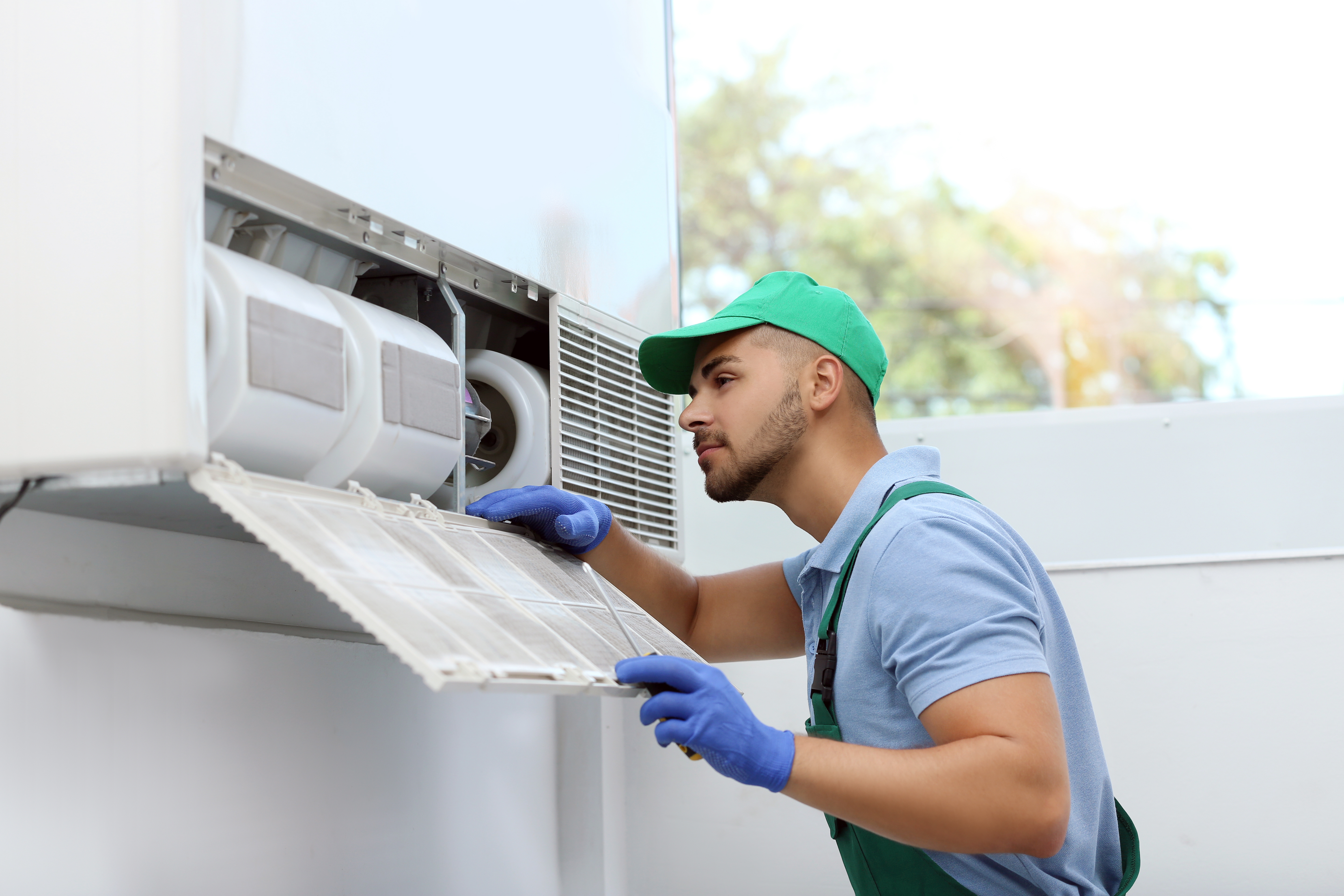Exactly How a Heatpump and Heater Interact to Optimize Your Home's Heating Effectiveness
Recognizing just how a heatpump and heater interact is essential for property owners seeking efficient home heating solutions. Each system has its staminas, supplying a well balanced technique to home convenience. The heatpump stands out in modest temperatures, while the furnace delivers rapid heat throughout extreme cold. This synergy not just lowers power expenses but additionally boosts the life expectancy of both home appliances. What elements influence this partnership, and exactly how can property owners maximize their advantages?
Comprehending Warm Pumps: How They Function
Numerous individuals may be unfamiliar with their internal workings, warmth pumps play a necessary function in modern home heating systems. These tools run by transferring warm from one location to an additional, using the principles of thermodynamics. In colder months, a warmth pump essences warmth from the outside air, ground, or water, and transfers it inside to heat the living room. Alternatively, during warmer months, it can turn around the process, working as an a/c by removing warmth from inside to the outside.Heat pumps contain an evaporator, expansion, compressor, and condenser shutoff. The cooling agent within the system absorbs warm as it vaporizes at low temperatures and pressures. The compressor after that increases the pressure and temperature of the cooling agent, permitting it to release warm as it condenses. This effective procedure can greatly minimize power intake compared to conventional home heating approaches, making heatpump a lasting choice for climate control in homes.
The Role of Heating Systems in Home Home Heating
Heating systems play an essential function in home heating by offering a trusted source of warmth during the colder months. They operate by generating heat through combustion or electrical resistance, dispersing it throughout the home using air ducts or glowing systems. The performance of a heater is usually gauged by its Yearly Gas Use Performance (AFUE) rating, which suggests how efficiently the unit converts gas right into heat.Furnaces can use different energy resources, consisting of all-natural gas, propane, electricity, or oil, enabling homeowners to pick one of the most suitable alternative for their demands. Unlike heatpump, which might have a hard time in extreme cool, heating systems keep constant performance, guaranteeing that interior temperatures remain comfy despite exterior conditions. In addition, contemporary heaters commonly come furnished with advanced innovation, such as variable-speed blowers and smart thermostats, enhancing their performance and responsiveness. This versatility makes heaters an important part in all-encompassing home heating methods.

Benefits of Using Both Solutions Together
Integrating the strengths of both heaters and heat pumps can bring about a much more efficient and efficient home heating option. Utilizing both systems enables homeowners to make the most of the heat pump's energy performance during milder temperature levels while counting on the heating system for even more extreme cold conditions. This twin approach can substantially reduce energy prices, as heat pumps take in much less power than typical heating methods when temperature levels are moderate.Additionally, making use of both systems together can improve convenience degrees in the home. Heatpump can offer constant, also home heating, while heaters can rapidly increase ambient temperature levels when needed. The assimilation of both systems can expand the life-span of tools by reducing wear and tear on each unit, as they share the workload. Ultimately, property owners can delight in a balanced, affordable heating service that changes perfectly to varying weather condition conditions, guaranteeing a warm and welcoming home throughout the cold weather.
Just How Warmth Pumps and Furnaces Enhance Each Other
They develop a corresponding home heating system that optimizes performance and convenience when property owners integrate warmth pumps and heating systems. Warm pumps run by moving warm from the outdoors air or ground, making them extremely efficient in modest climates. They succeed throughout milder temperatures, giving cost-efficient home heating. Conversely, furnaces generate heat with combustion or electric resistance, providing solid, immediate warmth throughout extreme cold conditions.The combination of these 2 systems enables dynamic changes based on temperature level fluctuations. During warmer months or milder winter days, the heatpump can take the lead, preserving energy and reducing expenses. As temperature levels drop, the heating system can seamlessly engage, making sure consistent heat throughout the home. This harmony not only enhances power usage but likewise boosts the lifespan of both systems, as each unit operates within its excellent performance variety. With each other, they create a balanced atmosphere that adjusts to differing environment needs.
Optimizing Performance: Tips for Homeowners
Property owners can improve their home heating performance via several useful methods. Developing a normal upkeep timetable, incorporating clever thermostat technology, and executing efficient insulation and sealing services are crucial actions. These procedures not just enhance comfort however likewise decrease energy costs.
Regular Upkeep Set Up
To assure optimal home heating effectiveness, establishing a regular maintenance schedule is essential for any home. Homeowners need to focus on routine evaluations of both warm pumps and furnaces to ascertain peak efficiency. This consists of altering air filters every one to three months, as clogged filters can significantly decrease efficiency. Additionally, organizing expert maintenance a minimum of annually enables specialists to identify and resolve prospective issues prior to they intensify. Property owners should additionally clean up the heatpump's outside unit to protect against debris build-up that can impede airflow. By sticking to a routine maintenance timetable, house owners not only boost their heating unit' performance however additionally prolong their life-span, causing greater convenience and reduced power costs throughout the chillier months.
Smart Thermostat Assimilation
Incorporating a clever thermostat right into a home furnace can greatly enhance energy efficiency, especially as it enables precise control over temperature settings. These tools can learn the home owner's routine and choices, automatically adjusting the temperature to maximize convenience while reducing energy use. As an example, they can lower heating throughout times when the home is empty, lowering unneeded consumption. Several wise thermostats also provide real-time power use data, enabling home owners to make educated decisions concerning their home heating practices. Additionally, Recommended Site remote accessibility by means of smartphone applications enables users to change settings from anywhere, making certain the home is warm upon return. Overall, clever thermostat combination not just enhances comfort however considerably adds to energy financial savings and efficiency.
Insulation and Securing Solutions
Smart thermostats play an important role in power efficiency, however their effectiveness can be considerably enhanced by correct insulation and securing services. Homeowners must prioritize protecting wall surfaces, floors, and attics to reduce warmth loss. Top quality insulation products, such as spray foam or fiberglass, can significantly boost thermal resistance. Additionally, sealing voids around windows, ducts, and doors stops cool air seepage and warmth escape. Weatherstripping and caulking are efficient techniques for resolving these leakages - heat pump replacement ooltewah tn. Normal examinations for air leaks, along with making use of blower door tests, can help identify problem areas. By buying insulation and sealing, homeowners can optimize the performance of their furnace, inevitably resulting in lowered energy usage and lower utility bills
Usual Misconceptions Concerning Warmth Pumps and Furnaces
What false impressions border heatpump and heating systems? Lots of individuals incorrectly believe that heat pumps are inadequate in cooler climates. In reality, modern heatpump are made to run effectively even in reduced temperature levels, offering reputable heating throughout winter months. An additional typical myth is that heaters are always more reliable than heatpump. However, this relies on the certain energy resources and effectiveness rankings of the systems concerned. Some might also assume that using both systems all at once is unnecessary, yet actually, this mix can enhance home heating effectiveness, especially during severe weather. Furthermore, individuals typically assume that warm pumps call for constant maintenance, when truthfully, they have similar upkeep requires to traditional furnace. By debunking these myths, house owners can make more informed choices regarding their home heating alternatives, ultimately causing boosted comfort and energy effectiveness in their homes.
Upkeep Factors To Consider for Combined Systems

Frequently Asked Questions
Can Warmth Pumps Job Effectively in Exceptionally Cold Climates?
Heatpump can battle read the full info here in very chilly climates as a result of lowered effectiveness and heat extraction constraints. Nevertheless, developments in technology have actually caused models designed for far better performance in such problems, improving their practicality in harsh settings.
The Length Of Time Do Heat Pumps and Furnaces Commonly Last?
Warm pumps generally last 15 to two decades, while furnaces have a life-span of 15 to 30 years. Normal upkeep can expand their durability, More hints making certain effective procedure and reducing the requirement for early replacements.

What Is the Average Price of Installing Both Equipments?
The typical price of setting up both a heatpump and a heating system generally varies between $5,000 to $10,000 - heat pump installation ooltewah tn. Aspects influencing this expense consist of system size, setup intricacy, and regional labor prices
Exist Tax Rewards for Using Energy-Efficient Heating Equipments?
Many house owners ask about tax obligation incentives for energy-efficient heating unit. Numerous government and state programs frequently supply rebates or debts, encouraging the adoption of sustainable modern technologies to decrease energy intake and advertise ecological responsibility.
How Do I Select the Right Dimension Heatpump and Heater?
Choosing the right size heatpump and heating system includes computing the home's square video, considering insulation quality, and examining regional environment. Consulting a specialist can assure excellent system performance and power performance based upon details demands. heat pump service. Comprehending how a heat pump and furnace job with each other is vital for house owners looking for effective heating solutions. In cooler months, a warmth pump essences heat from the outside air, ground, or water, and transfers it inside to warm up the living area. When property owners integrate warmth pumps and heating systems, they produce a complementary home heating system that makes best use of performance and comfort. Heat pumps run by transferring warmth from the outdoors air or ground, making them highly reliable in moderate environments. Warm pumps can struggle in exceptionally chilly climates due to lowered performance and heat removal restrictions
Comments on “How Property Owners are Switching to ductless mini splits for Energy Savings”